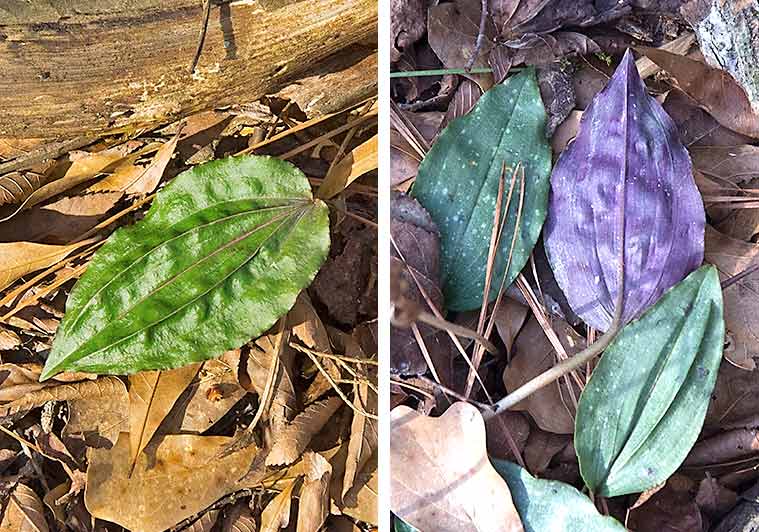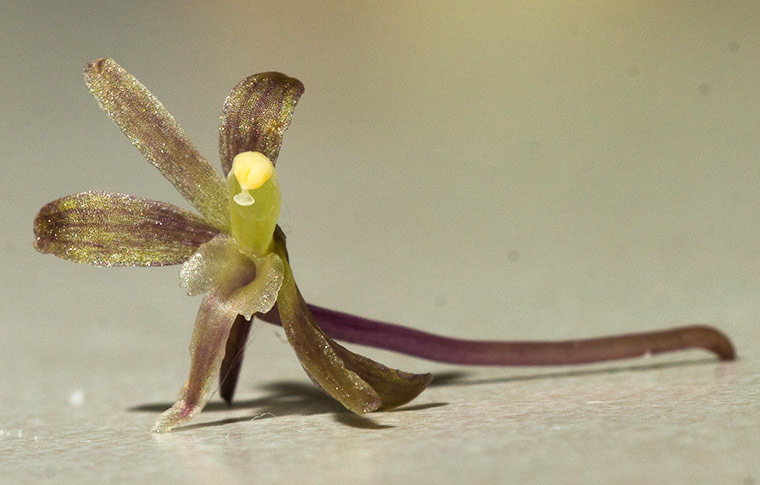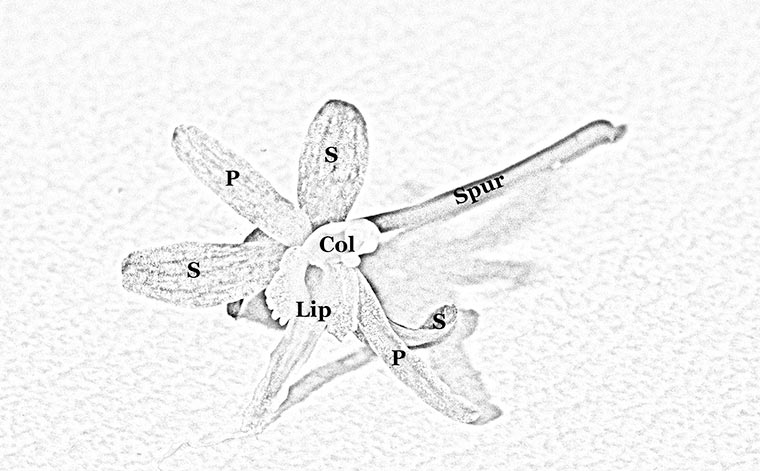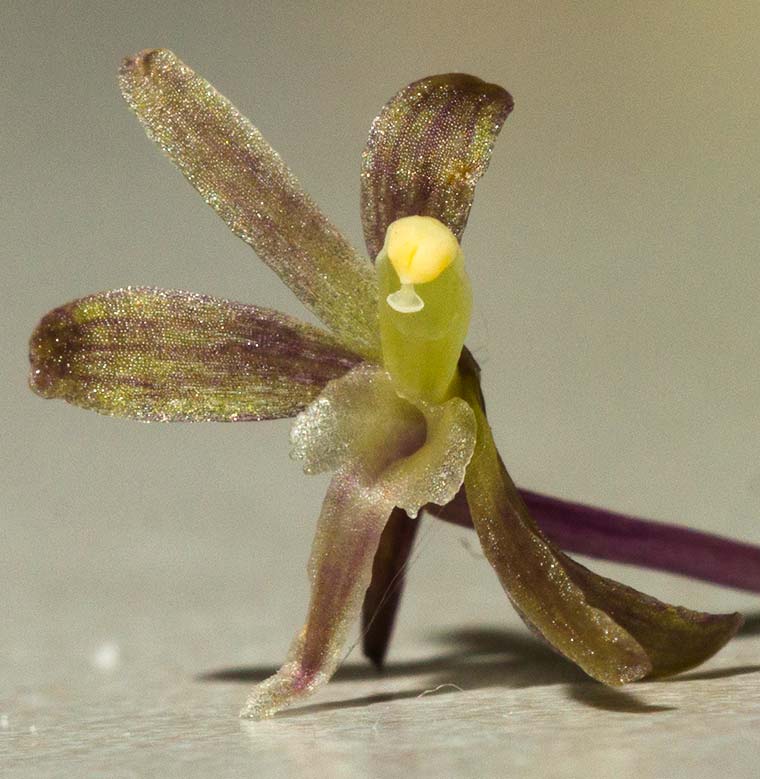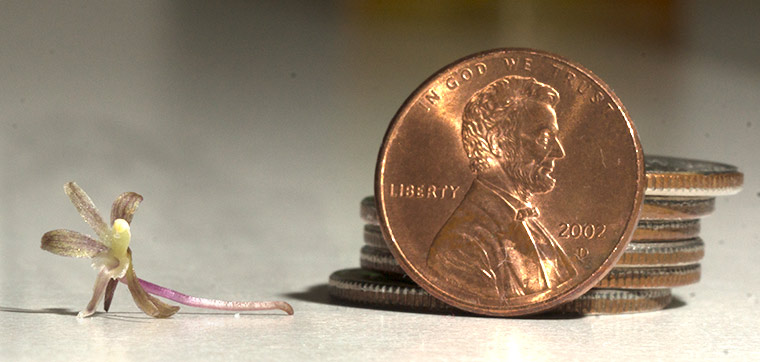Last Winter, I posted some pictures of Crane-fly Orchid (Tipularia discolor) leaves. If you remember that post, I said that this orchid has an unusual life cycle. Each plant has only one leaf. That leaf grows out in the Fall and withers away in late Winter. The flower stalk appears in late July or August, and the leaves are gone by the time it flowers. I marked some of those leaves in February, and promised I would watch for flowering stalks this summer. So far I have found two.
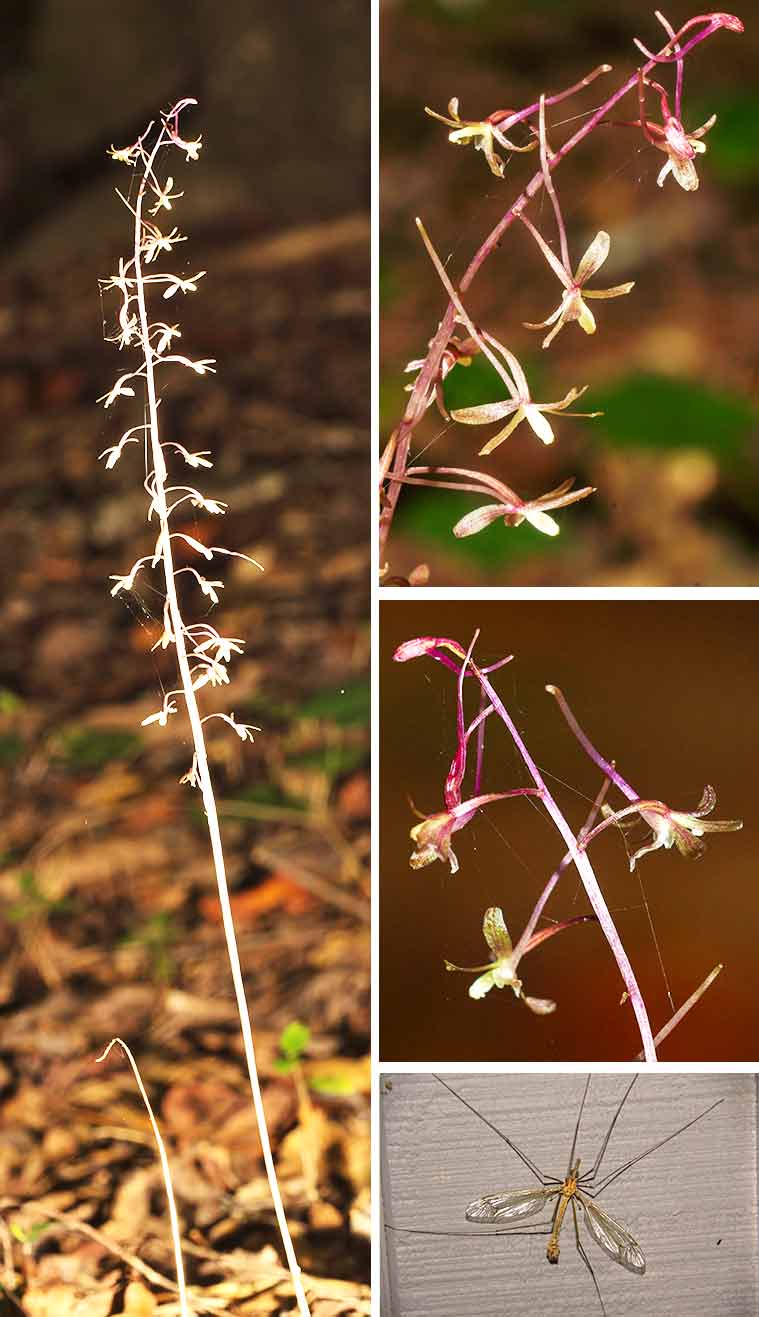
A flower stalk of a Crane-fly Orchid, flanked by two pictures of flowers. A crane fly is shown on the lower right.
A flower stalk is shown on the left. This one is about 20 inches tall.This group of flowers is supposed to look like crane flies flitting about, hence the name “Crane Fly Orchid”. The top two photographs on the right side show magnified views of the flowers. The flowers are purple to brownish in color, and each has a long spur extending out the back of the flower. The picture on the lower right is a crane fly (Tipularia sp.), so you can judge for yourself whether the flowers really look like crane flies.
I cut one of the flowers off the stalk so I could make better photographs. I made a drawing of the photograph above and labeled the parts of the flower (see below). The Crane-fly Orchid has three sepals (S). In many flowers, the sepals are green and look like a cross between a petal and a leaf. Here, though, the sepals look very much like petals (P).
Two of the three petals are similar to each other, but the third petal is modified into a structure called a “lip”. The lip has two flat lobes and one long tongue-like structure extending down in this photograph. The hole at the back of the lip leads into the spur, and the flower produces nectar at the very end of the spur. An insect wanting to get the nectar has to have a long tongue to reach the end of the spur. The stamens, which produce the pollen, and the stigma, which is the female reproductive structure, are united into a structure called the “column” (Col).
In order to get nectar from this flower, an insect would land on the lip and try to poke its proboscis into the spur. In doing this, the insect would very likely bump into the column and dislodge a packet of pollen (a pollinarium). The surface of the pollen packet is very sticky and adheres to the insect. If all goes well for the orchid the pollen packet will be deposited on the stigmatic surface of the column of another plant and fertilization will take place.
In the photograph above, the yellow pollen can be seen inside the end of the column. Each flower has four pollen packets. It is difficult to see in this photograph, but the column extends out a bit to the right or left side of the lip instead of being directly over the passage leading into the spur. Most crane-fly orchid flowers are pollinated by a type of moth. When the moth lands on the lip the pollen packet tends to be attached to one of the insect’s eyes because the column is angled to one side. A pollen packet may become attached to the right eye or the left eye depending on which way the column is canted. Both left-handed and right-handed flowers occur on the same plant. The eye provides a smooth surface for attachment of the pollen packet. Remember insect eyes are not like ours, they are covered with a durable exoskeleton, and thus provide a good surface for pollen attachment.
This last photograph shows the actual size of a Crane-fly Orchid flower. The penny is propped up against a stack of quarters.

